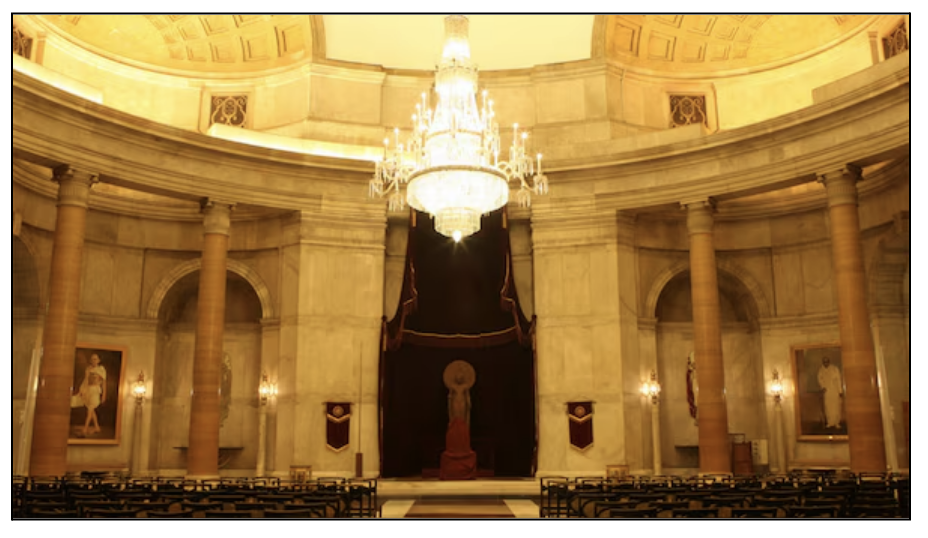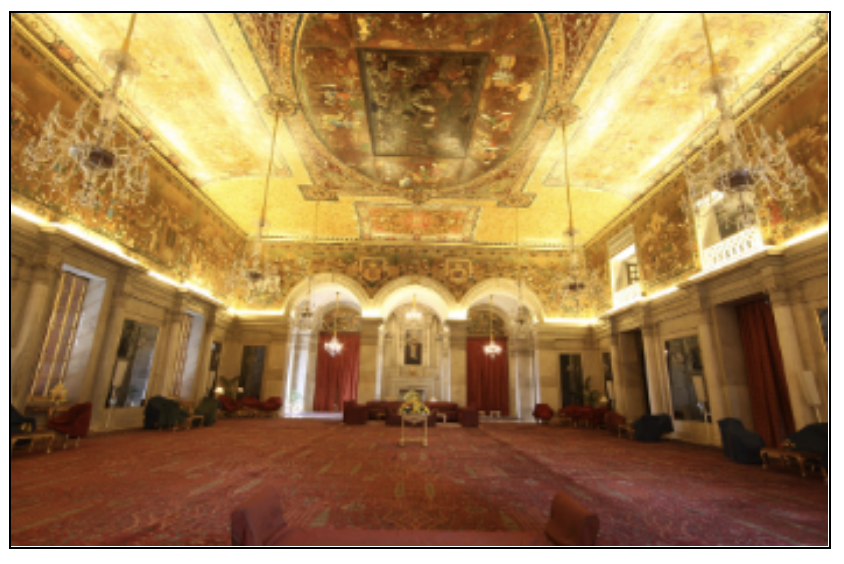News Excerpt:
The Durbar Hall and the Ashok Hall of Rashtrapati Bhavan have been renamed as 'Ganatantra Mandap' and 'Ashok Mandap' respectively.
More Details about the News
- Durbar Hall is renowned for its historic significance, particularly the 1947 swearing-in ceremony of independence, India’s first government and the Ashok Hall, originally used as a ballroom.
- This renaming effort aims to align the Rashtrapati Bhavan with Indian cultural values and ethos.
- The terms 'Durbar' and 'Hall' have been replaced because 'Durbar' refers to the courts and assemblies of Indian rulers and the British, which became irrelevant after India became a Republic, or 'Ganatantra'.
Historical Significance of Rashtrapati Bhavan
- The construction of Rashtrapati Bhavan was completed in 1929 following King George V's declaration in 1911 to shift the capital of British India from Calcutta to Delhi.
Ganatantra Mandap (Formerly Durbar Hall)

- The hall is used for Civil and Defence Investiture Ceremonies, where the President confers honors to recipients.
- It also hosts swearing-in ceremonies, such as those of the Chief Justices of India.
- Initially, there was debate over the extent of Indian influence in its architecture. Architect Edwin Lutyens led the project, incorporating primarily Western styles with Indian elements like marble jaalis for decoration and ventilation.
- Columns of yellow Jaisalmer marble with white caps and bases, along with multicolored marbles imported from Rajasthan and Italy, adorn the hall.
- Originally, two thrones were installed for the Viceroy and his wife. After Independence, a new throne featuring symbols of the Indian Republic was placed, with a 5th-century Buddha statue standing behind it.
Ashok Mandap (Formerly Ashok Hall)

- Originally a ballroom, Ashok Hall is now used for presenting credentials by foreign Heads of Missions and for formal introductions during State Banquets hosted by the President.
- A loft-like space is used for playing the national anthem during significant functions.
- The hall is decorated with six Belgian chandeliers and various paintings, including one by Fath Ali Shah, depicting him hunting a tiger.
- Italian artist Tomasso Colonnello, along with 23 Indian artists, extended the forest theme to the entire room.
- The hall's architecture reflects a mix of influences. Victorian-inspired fireplaces with Persian inscriptions, and walls adorned with paintings of royal processions, showcase this blend.


